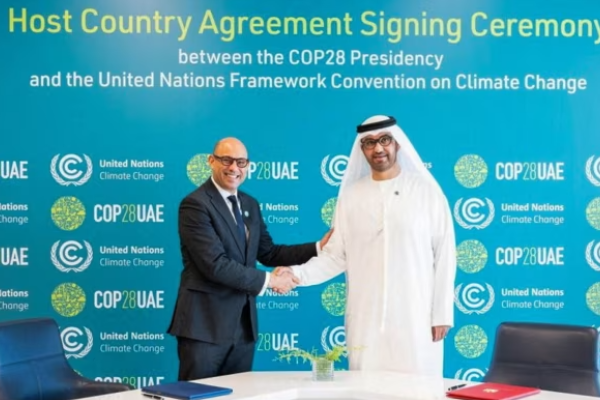Final preparations are in place as the United Arab Emirates gets set to host this year’s COP28 from November 30 to December 12.
This year’s climate conference, known as the Conference of the Parties (COP28), is expected to discuss a number of important issues in the midst of destructive floods, wildfires, and the highest temperatures ever recorded.
The UAE has set four themes for this year’s climate summit, which will review countries’ progress in implementing the Paris Agreement and center on the energy transition, climate finance, inclusivity in climate management, and people, their livelihoods, and nature.
With fossil fuel use and carbon emissions expected to top the agenda of the 13-day summit, plenty of criticism has been directed at the choice of host country.
Despite being a small country of only nine million inhabitants, the UAE emitted 237 million tones of carbon dioxide (CO2) in 2021, according to the Global Carbon Atlas.
The Gulf state ranks first in CO2 emissions per person with 25 tons.
In comparison, African countries emit an average of one tone of CO2 per person.
Africa has the lowest carbon footprint of any continent.
Read Also
Environmentalists have also criticised the decision to appoint Sultan al-Jaber, CEO of Abu Dhabi National Oil Company, as president.
Al-Jaber was further chastised for leaked documents revealing that he planned to meet with a number of governments at COP28 to discuss oil and gas deals.
World leaders have agreed to the fund but there is still no consensus as to who should pay and how much.
At a United Nations committee meeting in September, developing countries, including those in Africa, proposed that the fund should be at least $100 billion and unlocked by 2030.
According to the published proposal, $100 billion should be a “minimum” to provide a safety net when climate impacts exceed a country’s ability to cope.
The 28th COP is taking place as Africa deals with a year of climate-related emergencies.
Those traveling to Dubai will have plenty to discuss, from severe flooding in Libya and East Africa to severe droughts in many countries including Ethiopia and Somalia.





